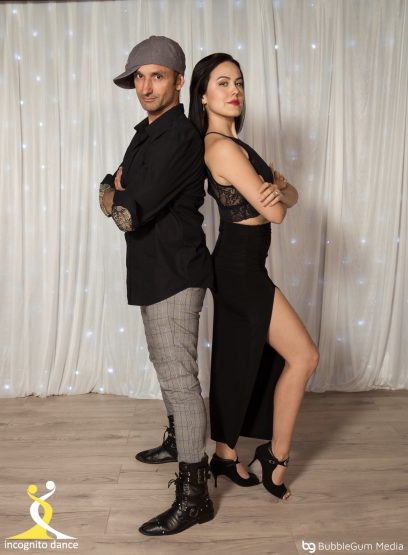The Single Strategy To Use For Dance Fridays
Table of ContentsDance Fridays Fundamentals Explained8 Easy Facts About Dance Fridays DescribedFacts About Dance Fridays RevealedThe 4-Minute Rule for Dance Fridays
Allow's consider Salsa dancing and music as a large Tree that looks like this: Salsa is danced globally while many technical elements of the dance coincide across designs (6 actions over 8 beats danced on a quick-quick-slow or slow-quick-quick rhythm), there are a number of "trademark" functions of the main styles of Salsa that distinguish one from the other.Couples taking part in a Gambling establishment Rueda dance all moves in unison as called by a Leader. Distinguishing attributes of Cuban design salsa are circular turn patterns (with "break back" actions on matters 1 and 5) in addition to body language influenced by traditional Afro-Cuban folkloric dances. Distinct features of Cali style salsa fasts and intricate footwork, danced with a solid hand hold connection in between companions.
The beginnings of the style are a subject of debate, but it is stated that New york city style Salsa dancing came from in the 1960's as a result of the influx of Latin American emigrants after the Cuban Transformation. Eddie Torres is one of the most popular New York design professional dancer, being virtually universally credited with promoting the design to dance centres outside of New York.
The fundamental rhythm of "On-2" is slow-quick-quick. The "youngest" of the designs of Salsa, L.A. Design (some individuals have actually called it "West Coast" style) became prominent in the 1990's and has its origins in ballroom (Mambo, Swing and Cha, Cha, Cha). Transform patterns lead and adhere to strategies are greatly affected by these designs, with the Cross Body Lead being the foundation of the style.
7 Easy Facts About Dance Fridays Described
Style are execution of turn patterns and numbers in the "port", with the break actions on matters "1" and "5". This style is also identified by expensive and commonly complex arm styling by the follow to accent the "1" and "5" counts. The standard rhythm of "On-1" is quick-quick-slow. While Salsa music has solid beginnings in Cuban, Colombian and Puerto-Rican folkoric traditions, it can not be marked down that all Afro-Latin and Latin American cultures have contributed to contemporary Salsa music as we understand it today.
It's feasible that due to political factors the payment of Afro-Cuban culture and heritage to contemporary Salsa in the 1960's and 70's is not commonly acknowledged, yet it can not be disregarded the substantial contribution and impact of the see here "Queen of Salsa", Celia Cruz (salsa club san francisco). Many thanks to the net and ease of accessibility to info, the popularity of Salsa songs, dance and culture has spread like wildfire over the last 30 years and even then modern Salsa artists proceed to pay homage to the Founding Dads and Mother of Salsa.
Today Salsa songs is created, executed and well known globally. In 2000 the impact of Latin American music and society (not just Salsa) was identified by the National Academy of Recording Arts and Sciences in the United State and the Latin Grammy Honors were produced. The Latin Grammy's have actually accentuated the Salsa Legends and modern Salsa artists alike
The 9-Minute Rule for Dance Fridays
distinguishing characteristics of Salsa music are: 4/4 measure signature, Son Clave and Tumbao rhythms, Montuno Piano Unless you have a background in music, the above 3 qualities most likely mean absolutely nothing to you. A simpler means to describe Salsa songs is just how it does NOT sound like other kinds of Latin American music.
Bachata is a straight 4 beat dancing with a prevalence of a syncopated guitara line and a clear absence of any type of "difficult" piano, brass (trumpet, trombone) lines. Cha, Cha, Cha looks like Salsa music the most as it feels like "actually slow-moving" salsa/mambo. salsa club san francisco. Cha, Cha, Cha can be distinguished by it's focus of the dual tumbao beat on matters 4 +5 and 8 +1 (the "cha-cha-cha") You have actually been to a Salsa evening at a club and you're hooked you enjoy the songs, the energy, the appearance of 2 dancers sliding across the dance floor executing trendy rotates and transform patterns
It's time for lessons. With numerous workshops around and various styles to select from, where does a complete newbie begin? Many brand-new professional dancers choose to discover L.A. "On-1" style slotted Salsa designs are the most widespread in The United States and Canada (with some exemptions of some metropolitan centres that still mainly accept Cuban and Puerto Rican styles) and L (https://www.slideshare.net/evanmargolin94124).A
.A. Style will swiftly instruct you the basics of Salsa timing, weight transfer and turn pattern execution. Numerous professional dancers, when they have actually had a year or 2 of dancing L.A. Style Salsa under their belts, "switch" to New York style in order to diversify their dancing vocabulary; yet lots of professional dancers choose to stick to just one design of Salsa and appreciate their time on the dancing floor in that certain design (salsa club san francisco).
Style and New York Design all being danced in the same club, with most of the professional dancers having the ability to change from one design to the various other from one song to the following. Despite which style you select it's crucial to adhere to that style until you're really comfortable with the principles of timing, body rhythm and structure step implementation before considering "changing" styles (if you want to).
